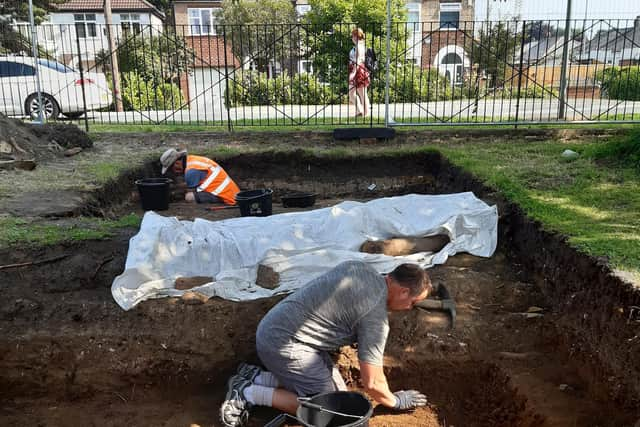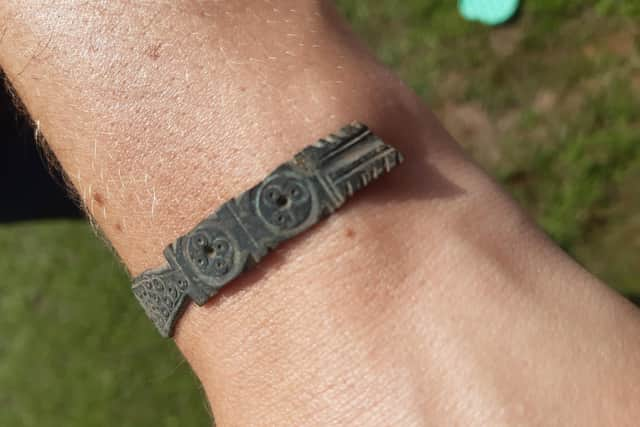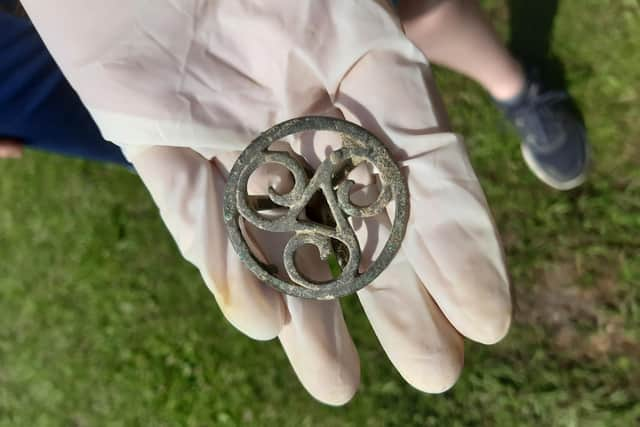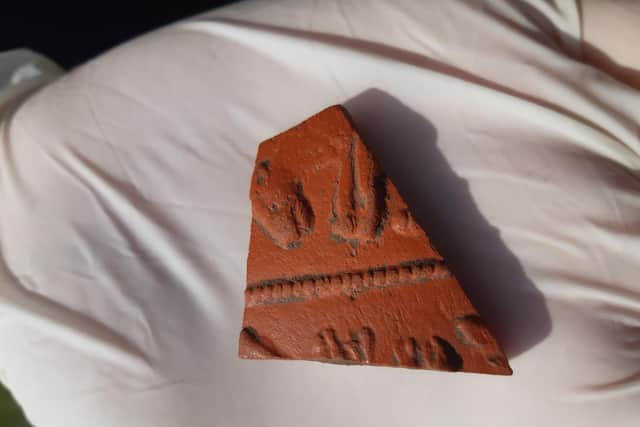Third century Roman main wall found during excavations at Brough in East Yorkshire
The discovery of the wall which once would have stood 20ft high and had towers was made in one of the trenches opened up at the Burrs playing field in Brough as part of a two-week dig.
The Roman fort at Brough - known to the Romans as Petuaria - was founded in 70AD and abandoned in about 125AD and was succeeded by a civilian settlement or vicus.
Advertisement
Hide AdAdvertisement
Hide AdThe wall is thought to have been either the town wall or part of a naval base constructed by Emperor Carausius (died 293AD).


Senior lecturer in archaeology at the University of Hull, Dr Peter Halkon said a significant proportion of the coins found were of Carausius, a river pilot who worked his way up to become commander of the North Sea fleet and his successor Ellectus.
In Roman times the site was in a sheltered strategic position just off the River Humber, inside a tidal inlet.
He said: "Carausius probably had a naval base here controlling access to the provincial capital of York, which was an imperial city."
Advertisement
Hide AdAdvertisement
Hide AdThe wall was first discovered by Dr Philip Corder, who identified a Roman town of about five hectares, in a series of digs between 1934 to 1937 - and his team may have left behind a six-inch ruler which the modern-day diggers uncovered in a trench.


Corder also excavated one of the series of rooms in a courtyard building, which had fine painted wall plaster and a hypocaust or heating system, which came to light in Dr Halkon's 2020 dig.
This year the team dug deeper into a fourth phase of buildings, and found a pit with many layers of oyster shells, and others of tiles and pottery, which seems to have been carefully laid down before the building on top was constructed.
What it represents isn't known, but could have been laid down during feasts, like a topping out ceremony.
Advertisement
Hide AdAdvertisement
Hide Ad"It is repeated all over Roman Britain," said Dr Halkon. "When they put a new building up there is some evidence of some kind of offering before they construct the building."


The dig also uncovered the top of clay ramparts, close to the entrance to the playing fields, which would once have had a stone wall on top, and would have been at the northern extremity of the first fort. Intriguingly brick foundations of what might be an air-raid shelter with a blast wall was revealed on one side.
Eyewitness accounts talk of German prisoners of war being marched down the road from Melton to demolish it at the end of WW2. However the jury is out - and the other option is that it could be a holding tank for water.
Dr Halkon said: "This season we've found evidence for the whole history of the Roman activity (at Brough).
Advertisement
Hide AdAdvertisement
Hide Ad"It clearly had some civilian purpose because it had a stage. We haven't definitively found any real evidence for the theatre yet. But what we have found is the story of how it developed from initially being a Roman fort right through to it being a possible naval base."


Well over 100 people took part in the excavations - most of whom had never dug before - and more than 400 visited the site over the fortnight.
Finds include a leopard on a fragment of fine tableware, a harness fitting, worn by a soldier or adorning a horse, and a copper alloy bangle.
Comment Guidelines
National World encourages reader discussion on our stories. User feedback, insights and back-and-forth exchanges add a rich layer of context to reporting. Please review our Community Guidelines before commenting.